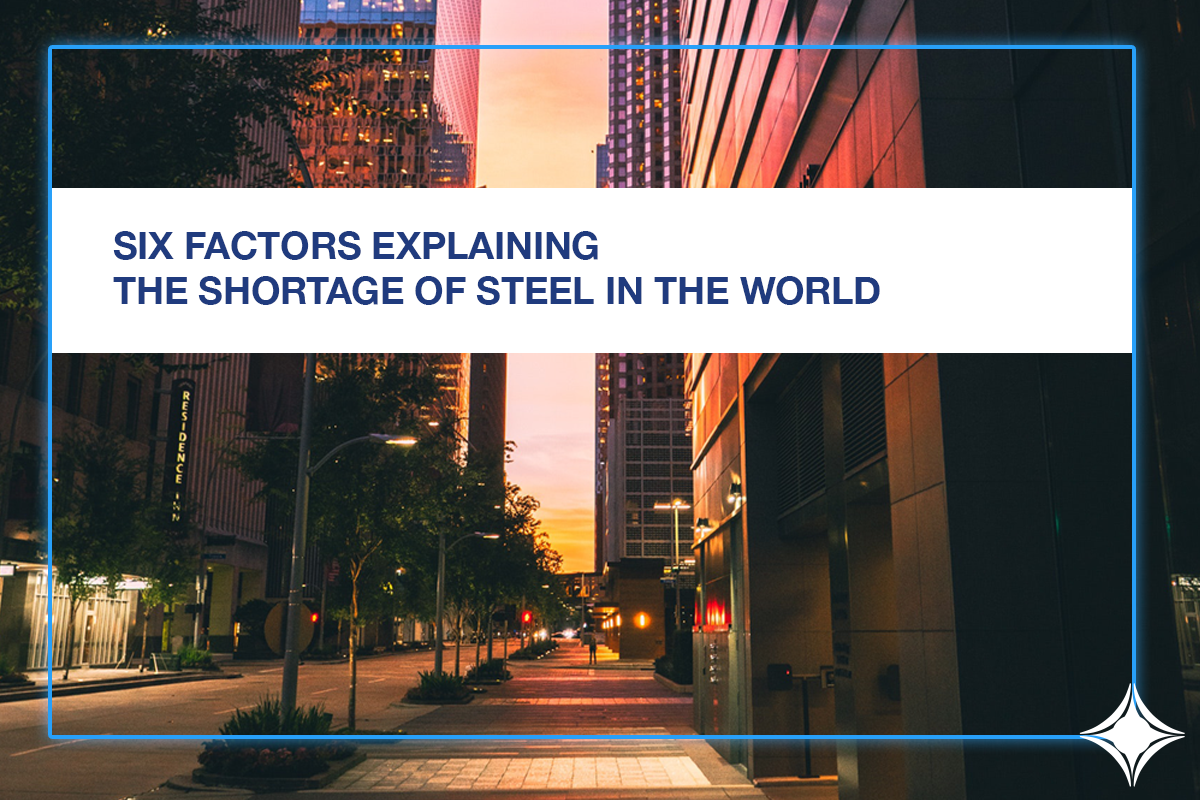Six factors explaining the shortage of steel in the world
In the last year, different media outlets specializing in the industrial and economy sectors reported a scarcity of steel that eventually resulted in a crisis affecting our industry and others.
This is not only happening in the US, but it is also impacting other countries in Europe and Latin America. It cannot be denied that this shortage is the result of the chain of events that began in early 2020 with the Covid crisis, with its effects still impacting everywhere in 2021.
Find out six factors that explain the shortage of steel in the world in 2021 below.
What are the reasons for the global shortage of steel?
The market’s reactivation and recovery
The total or partial cuts in production, as well as the cessation of operating activities of many steel manufacturers, represented an unexpected turn that seriously affected the sector, which since 2019 is dragging issues on such as the prices of international customs tariffs.
This, coupled with the fact that different measures were taken in each country or region to keep essential economic activities going, resulted in out-of-sync markets. Today, steel industries are active again by and large, yet the partial pause in activities is still an obstacle.
Shortage of raw material
Large volumes of steel come from scrap recycling, while another large portion of the raw material required for manufacturing comes from mining. Due to the cessation of activities, especially in the mining sector, the markets were forced to import scrap, which helped boost this sector but ended up significantly reducing scrap stocks for the usual demand of the industry.
More so, although some mining and steel sectors tried to keep up with production, they were still affected by delays in logistics and transport operations due to border closures, or because of limitations in customs personnel
Prices on the rise
Different steel industries have been affected by the rise of steel prices in 2021 that came to be because of the over-demand and shortage of raw materials: in addition to the steel sector, others such as that of copper have also seen their production capacities reduced.
So far in 2021, it is estimated that at the general level, the rise in steel prices can reach up to 65.67% globally. In the case of the United States, various products have been affected individually; an example of this is rod, which has become up to 22% more expensive.
Market over-demand
During the pandemic, industries such as construction were forced to practically shut down their activities entirely, putting the construction of buildings or infrastructure on hold, which not only affected this sector but also others that depend on it, such as real estate, or transportation and telecommunications.
Today, the fact that economic reactivation is taking place in an accelerated way is generating an immediate over-demand for materials; to this it must be added that industries such as the automotive one also represents an important source of demand.
On the other hand, other sectors that also depend on steel by-products, such as that of machinery or electronics manufacturers, are expected to also reactivate with high expectations for supply.
Downward trend on steel imports in China
During 2020, steel imports in China reached a historical high, importing about 3 million tonnes per month) marking a year-on-year increase of 72.2%, all this due to a boom in real estate and infrastructure development in that country.
This country even suspended taxes on the import of steel at that time, yet since before June 2021 an evident increase in demand has been reported, which has also ended up contributing to the increase in prices.
The previous administration’s imposition of customs tariffs and fees on steel
The American steel industry has been facing several new challenges since 2018, including the imposition of customs tariffs of up to 25% on steel import rates, a measure undertaken by the past administration, intended to boost domestic production.
Yet after the effects of the pandemic, this measure also pushed steel prices on the rise due to production cuts and importing difficulties. The current administration is already negotiating with authorities and producers in the European Union and Latin America to deploy measures able to minimize such negative impacts.
The outlook given the shortage of steel in the industry points towards a gradual recovery. It is expected that in the last 3 months of 2021 the challenges persisting will be overcome, achieving so the much-anticipated recovery of the sector.
